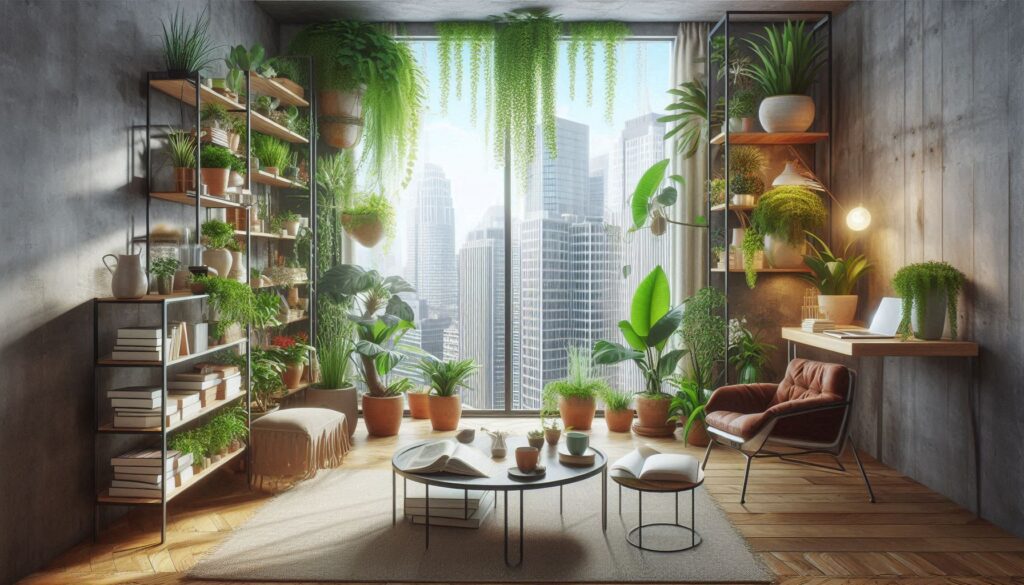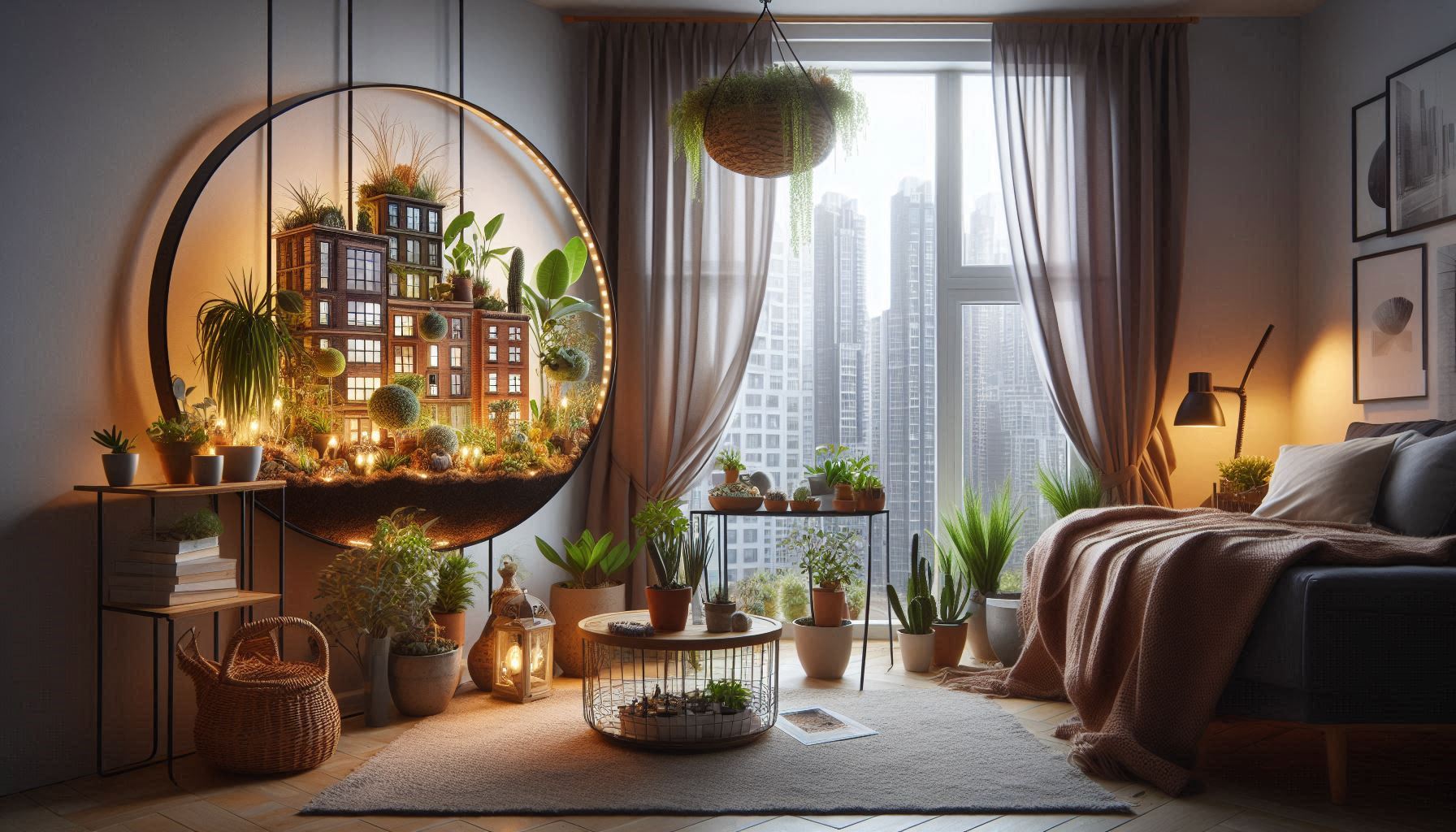Urban living often comes with limited outdoor space, but that doesn’t mean you have to give up on gardening. Indoor gardening has become increasingly popular among city dwellers looking to bring greenery, freshness, and a sense of nature into their urban apartments. With a bit of creativity, knowledge, and the right tools, you can transform your living space into a lush indoor oasis full of thriving plants, vibrant flowers, and even homegrown herbs and vegetables. In this comprehensive guide, we will explore the exciting world of indoor gardening in urban apartments, covering everything from choosing the right plants and containers to optimizing lighting and humidity levels for successful indoor cultivation.
Benefits of Indoor Gardening in Urban Apartments:

Indoor gardening offers a multitude of benefits for urban apartment dwellers, ranging from improved air quality and aesthetics to stress relief and the joy of gardening all year round. By cultivating plants indoors, you can enhance your living environment, connect with nature, and create a sense of tranquility and well-being in your urban dwelling. Indoor gardening also allows you to grow your own fresh herbs, vegetables, and fruits, reducing your carbon footprint and promoting sustainable living practices. Additionally, indoor plants can help purify the air, increase humidity levels, and boost your mood and productivity, making them essential companions in urban apartment living.
Choosing the Right Plants for Indoor Gardens:
When it comes to indoor gardening in urban apartments, selecting the right plants is crucial for success. Consider factors such as light requirements, space limitations, humidity levels, and maintenance needs when choosing plants for your indoor garden. Opt for low-maintenance houseplants like pothos, spider plants, snake plants, and ZZ plants that can thrive in indoor conditions with minimal care. For herb gardens, choose aromatic herbs like basil, mint, cilantro, and parsley that can be grown in pots or containers on windowsills or countertops. If you’re interested in growing vegetables indoors, go for compact varieties like cherry tomatoes, lettuce, peppers, and microgreens that can adapt to limited space and indoor growing conditions.
Container Selection and Indoor Garden Design:
Selecting the right containers for your indoor garden is essential to ensure proper drainage, root aeration, and space efficiency. Choose containers with drainage holes to prevent waterlogging and root rot in your plants, and opt for lightweight, durable materials like ceramic, terracotta, or plastic that suit your indoor decor and aesthetic preferences. Consider using hanging planters, wall-mounted planters, vertical shelving units, and tiered stands to maximize space and create a visually appealing indoor garden design. Experiment with different container sizes, shapes, and textures to create a dynamic and diverse indoor garden that reflects your personal style and green thumb.
Optimizing Lighting for Indoor Plants:
Light is one of the most critical factors in indoor gardening, as plants need sufficient light to photosynthesize and grow healthily. While urban apartments may lack abundant natural light, there are several ways to optimize lighting for indoor plants. Choose south-facing windows for maximum sunlight exposure, rotate your plants regularly to ensure even light distribution, and supplement natural light with grow lights or LED plant lights for plants that require higher light intensity. Consider using light meters or timers to monitor and regulate light levels for different plant species and adjust lighting conditions based on seasonal changes and plant growth stages.
Maintaining Optimal Humidity and Temperature Levels:
Humidity and temperature play crucial roles in indoor gardening, affecting plant growth, transpiration, and overall health. Urban apartments with centralized heating and air conditioning systems may have low humidity levels, which can negatively impact tropical plants and moisture-loving species. To maintain optimal humidity levels for indoor plants, consider using humidifiers, pebble trays filled with water, and misting your plants regularly to increase moisture in the air. Monitor temperature fluctuations in your apartment, avoid placing plants near drafty windows or heat sources, and provide adequate air circulation to prevent overheating or cold stress in your indoor garden.
Watering and Fertilizing Indoor Plants:
Proper watering and fertilizing practices are essential for maintaining healthy, vibrant plants in your indoor garden. Develop a watering schedule based on your plant’s individual needs, checking soil moisture levels and adjusting watering frequency accordingly. Use room temperature water to prevent shock to plant roots, and avoid overwatering or underwatering your plants, as both can lead to root rot or dehydration. Incorporate organic fertilizers or nutrient-rich potting mixes to provide essential nutrients for your plants, and fertilize according to plant growth stages, seasonal changes, and specific plant requirements. Consider using self-watering pots, watering spikes, or moisture meters to help regulate watering and fertilizing routines for indoor plants.
Pest and Disease Management for Indoor Gardens:
While indoor plants are less susceptible to pests and diseases compared to outdoor gardens, urban apartment dwellers may still encounter occasional pest infestations or fungal issues in their indoor gardens. Monitor your plants regularly for signs of pests like aphids, mealybugs, spider mites, or fungus gnats, and take prompt action to prevent further damage. Implement natural pest control methods such as neem oil, insecticidal soap, or beneficial predator insects to combat pest outbreaks without harming your plants or the environment. Practice good hygiene by removing dead or yellowing leaves, pruning diseased plant parts, and maintaining clean gardening tools and containers to prevent the spread of pests and diseases in your indoor garden.
Creating a Sustainable Indoor Garden:
Indoor gardening in urban apartments offers a unique opportunity to practice sustainability, conservation, and eco-friendly gardening practices. Make conscious choices when selecting plants, containers, and gardening supplies, opting for sustainable, recycled, or ethically sourced materials whenever possible. Consider composting kitchen scraps, recycling water, and repurposing household items for DIY planters or garden decor to minimize waste and reduce your environmental impact. Cultivate native plants, heirloom varieties, and endangered species to support biodiversity, conservation efforts, and ecosystem resilience in urban environments. By fostering a sustainable indoor garden, you can make a positive impact on the planet and inspire others to embrace green living in urban settings.
Indoor gardening in urban apartments offers a wealth of opportunities for city dwellers to connect with nature, grow their own food, and create beautiful indoor spaces filled with thriving plants and greenery. By following the tips and techniques outlined in this guide, you can create a successful, sustainable indoor garden that brings joy, relaxation, and beauty to your urban living environment. Whether you’re a novice gardener or a seasoned plant enthusiast, indoor gardening in urban apartments provides endless possibilities for creativity, self-expression, and environmental stewardship. Embrace the beauty of indoor gardening and transform your urban apartment into a vibrant oasis of nature and growth.

